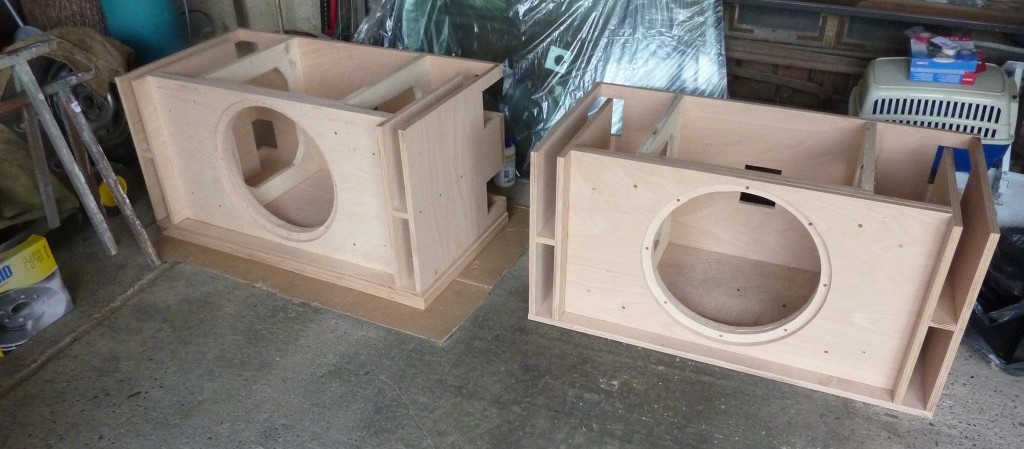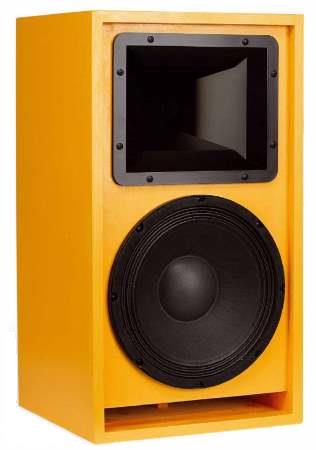Most simulation programs and online calculators use round (tube) vents as their standards.
Now i want to build a cabinet with one or two square vents.
I have an idea of how the dimensions of the round vent should be, now i need to translate that.
i'm sure it is not as easy as keeping the area and the length the same.
my vent should be as wide the whole width of the baffle.
the baffle should be recessed.
to keep things (a bit) easier i look into designs like this:

nicer would be a vent that is 'flush-mounted' with the baffle like this (but maybe with two vents):

i'm not happy with the options that winisd offers, because it doesn't consider different cases.
can somebody give a formula that allows for different cases of vent geometry?
Now i want to build a cabinet with one or two square vents.
I have an idea of how the dimensions of the round vent should be, now i need to translate that.
i'm sure it is not as easy as keeping the area and the length the same.
my vent should be as wide the whole width of the baffle.
the baffle should be recessed.
to keep things (a bit) easier i look into designs like this:

nicer would be a vent that is 'flush-mounted' with the baffle like this (but maybe with two vents):

i'm not happy with the options that winisd offers, because it doesn't consider different cases.
can somebody give a formula that allows for different cases of vent geometry?
When the aspect ratio becomes "squashed" the port becomes more restrictive. Unfortunately i cannot give you a formula. At least it is possible to remove the top side of the vent material until your tuning is as you wish...
IIRC, slotted vents give a little less output, but are more linear with increasing acoustic power.
Ports with large roundovers hold up well at high velocity, but "switch off" more suddenly than those without the roundovers.
There was some discussion around here a while back.
Chris
Ports with large roundovers hold up well at high velocity, but "switch off" more suddenly than those without the roundovers.
There was some discussion around here a while back.
Chris
thanks, guys.
so what would be a good starting point to experiment with that kind of stuff?
do you have a link?
so what would be a good starting point to experiment with that kind of stuff?
There was some discussion around here a while back.
do you have a link?
The cab that was the reason for me to start this thread finally became trapez-shaped.
I decided to use round vents close to the woofer, which turned out to be a good choice back then.
Now i'm on this topic again as i design a fullrange box with double 12" woofers and a big tweeter horn.
The box should be designed like a ~1m high tower, shaped like this:
(x=horn, o=woofer, I=slit)
.x.
IoI
IoI
The horn is broader than the woofers (46cm vs 30cm), a slit of some centmeters on each side would easily fit beneath the horn.
Each woofer might get its own enclosure, as the whole box will need bracing anyways.
The woofers have a Qts of 0.39 and fs of 50Hz.
Now i use a br-calculator....
Volume can be as small as 50ltrs each.
If i give each woofer cabinet a height of 38cm and using 4.5cm broad slits results in ~170cm^2 vent area.
This would (1:1) translate into 14.7cm diameter for a single round vent.
The calculator says that in this case a length of ~24.3cm would give a f3 of 47Hz, which looks very satisfying.
Any comments or suggestions on that way of calculating?
I decided to use round vents close to the woofer, which turned out to be a good choice back then.
Now i'm on this topic again as i design a fullrange box with double 12" woofers and a big tweeter horn.
The box should be designed like a ~1m high tower, shaped like this:
(x=horn, o=woofer, I=slit)
.x.
IoI
IoI
The horn is broader than the woofers (46cm vs 30cm), a slit of some centmeters on each side would easily fit beneath the horn.
Each woofer might get its own enclosure, as the whole box will need bracing anyways.
The woofers have a Qts of 0.39 and fs of 50Hz.
Now i use a br-calculator....
Volume can be as small as 50ltrs each.
If i give each woofer cabinet a height of 38cm and using 4.5cm broad slits results in ~170cm^2 vent area.
This would (1:1) translate into 14.7cm diameter for a single round vent.
The calculator says that in this case a length of ~24.3cm would give a f3 of 47Hz, which looks very satisfying.
Any comments or suggestions on that way of calculating?
- Status
- Not open for further replies.
- Home
- Live Sound
- PA Systems
- BR vent calculus: round -> square